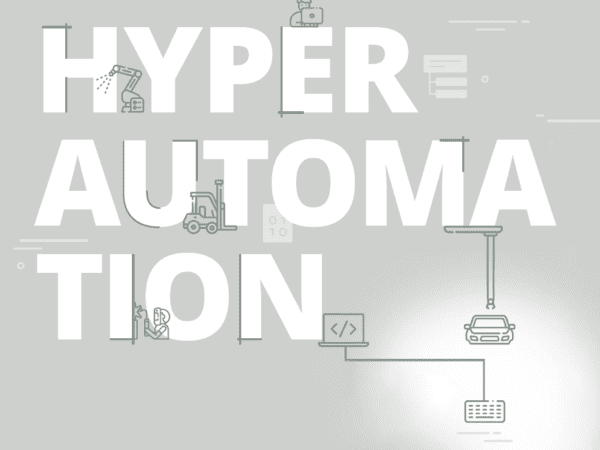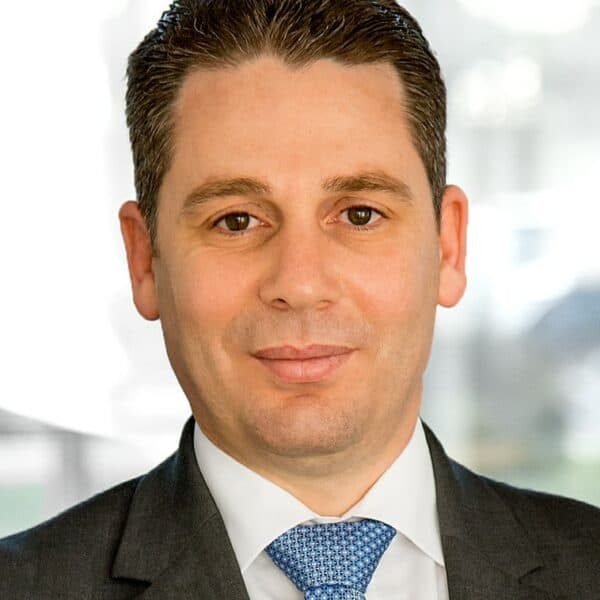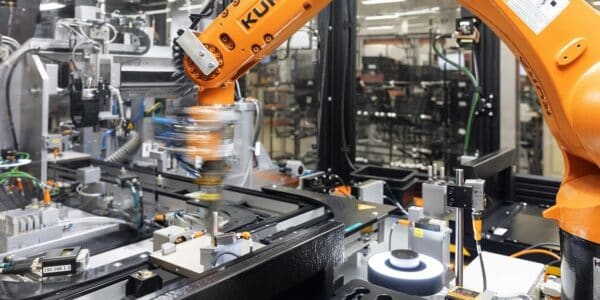
FOR THE TECHNOLOGY TO REALIZE ITS BENEFITS, PROCESSES MUST BE LEAN AND STABLE.
After Robotic Process Automation (RPA), the first companies are already taking the next development step with hyperautomation. Racel Maalej, partner and managing director at technology partner PKF Fasselt Consulting GmbH and its subsidiary CAPTOS GmbH, and Frank Krüger, Senior Partner at Staufen AG responsible for the topic of digitization, discuss the direction in which technology is developing and how it is finding its way out of offices and into production halls.
Rule-based automation of individual processes using RPA is now standard in large companies. Medium-sized companies are also using this technology on a broad scale or are planning to introduce it in the short term. Mr. Maalej, what comes after RPA?
Racel Maalej: We are now taking the next development step: hyperautomation. With modern tools such as our CAPTOS automation platform, the capabilities of software robots are considerably enhanced by means of a deep integration of machine learning (ML) and artificial intelligence (AI). Thanks to hyperautomation, we achieve more flexibility, cover a wider range of applications, and can make automation lines significantly longer or extend them.
Frank Krüger: Typical RPA application areas have been wherever high transaction volume meets structured data sets. Through hyperautomation, more complex activities can now be covered in the manual area or in the combination of software and hardware. This makes RPA & Co. even more interesting for traditional machine builders – and in production as well. After all, it is the properties and characteristics of a process that determine which technology fits – no longer just where it is used.

Racel Maalej
Managing Director
PKF Fasselt Consulting GmbH

Racel Maalej: In general, a bot pays for itself very quickly with the appropriate volumes. But there are also use cases that do not depend on volume. For example, if a company wants to increase accuracy in a process, a software solution can also be an ideal fit. Before implementing an RPA or hyperautomation solution, we recommend companies start with a pilot. After all, the first step is to get to know the technology and reduce fears within the company – especially among the workforce. Once the pilot runs smoothly and the company has recognized the benefits of the technology, the next step is to identify the processes that would benefit most from automation.
Frank Krüger: This is where the collaboration between PKF and Staufen reaches its full potential: As an integrator with lean expertise, we connect the technology with the production environment and can thus identify the right processes or, if necessary, reorganize processes. After all, for the technology to realize its benefits, processes must first and foremost be lean and stable. This is the only way to ensure trouble-free operation and a good ROI.
Racel Maalej: I agree. Automating a bad process would also negate any time advantages. Unlike traditional IT projects, RPA projects can be implemented within a few weeks. Once the pilot is up and running, it is on to data-based validation and identifying potential savings. After that, the roll-out phase begins. With the CAPTOS solution, we then add AI support on top and thereby clearly distinguish ourselves from traditional RPA approaches.
Frank Krüger: The requirement for this is structured data. If, for example, information needs to be extracted from a text, this can only be done using an AI. Even today, it is not just for documents such as letters or invoices. Chat messages or voice files can also be read out, and hardware components such as data glasses, data gloves or wearables can be used to define and set up automation routes in a completely new way, because there is live feedback or real-time data recording, for example. Hyperautomation will become a hyper-topic in the coming years. That is why I advise companies to prepare their employees quickly and ease their fears. The software robot is not a competitor but rather supports and takes over monotonous work steps. Germany currently has a shortage of 800,000 skilled workers, and this situation will get worse in the future. To counter the shortage of skilled workers, companies must now automate appropriate processes. The future therefore lies in intelligently linking people and machines.
Racel Maalej: In the future, companies will need a well-trained workforce to oversee and optimize processes. Today, the challenge is more that the workload of individual employees is becoming more intense. Especially in hectic and challenging work environments, RPA and hyperautomation can provide very effective relief.
You might also be interested in

“Lean, digitalization and sustainability will be even more tightly interwoven.”
ifm is a leading supplier of innovative automation technology. Managing Director Bernd Hausler explains in an interview how digitalization is helping open up new fields of business and what challenges the industry will struggle with in the future.
Read more
Algorithms and AI: Intelligent Sourcing for a Transparent Supply Chain
Purchasing agents in industrial companies are under a lot of pressure ever since the unpredictable events such as the pandemic or the war in Ukraine have lead to massive supply bottlenecks. Cost-effective and efficient material procurement is becoming increasingly more difficult.
Read more



